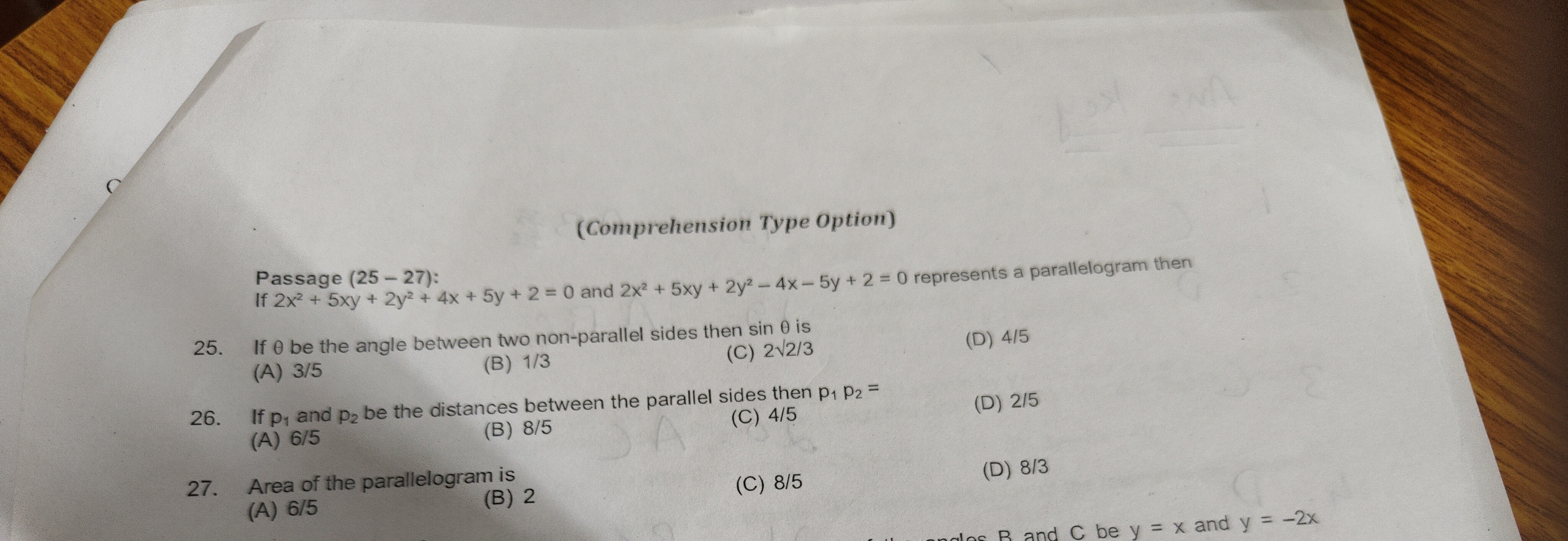Question
Question: If $2x^2+5xy+2y^2+4x+5y+2=0$ and $2x^2+5xy+2y^2-4x-5y+2=0$ represents a parallelogram then...
If 2x2+5xy+2y2+4x+5y+2=0 and 2x2+5xy+2y2−4x−5y+2=0 represents a parallelogram then

If θ be the angle between two non-parallel sides then sinθ is
If p1 and p2 be the distances between the parallel sides then p1p2=
Area of the parallelogram is
3/5
Solution
The two given equations represent pairs of intersecting lines. Equation 1: 2x2+5xy+2y2+4x+5y+2=0 factors as (2x+y+2)(x+2y+1)=0, giving lines L11:2x+y+2=0 and L12:x+2y+1=0. Equation 2: 2x2+5xy+2y2−4x−5y+2=0 factors as (2x+y−2)(x+2y−1)=0, giving lines L21:2x+y−2=0 and L22:x+2y−1=0. These four lines form a parallelogram with parallel sides (L11,L21) and (L12,L22).
For question 25: θ is the angle between two non-parallel sides. The slopes of the non-parallel sides are m1=−2 (from 2x+y+2=0) and m2=−1/2 (from x+2y+1=0). The tangent of the angle θ between two lines with slopes m1 and m2 is given by: tanθ=1+m1m2m1−m2 Substituting the slopes: tanθ=1+(−2)(−1/2)−2−(−1/2)=1+1−2+1/2=2−3/2=−43=43 To find sinθ, we can consider a right-angled triangle where the opposite side is 3 and the adjacent side is 4. The hypotenuse would be 32+42=9+16=25=5. Therefore, sinθ=hypotenuseopposite=53.
